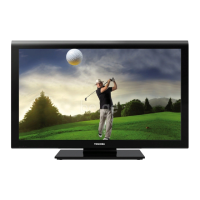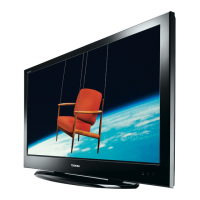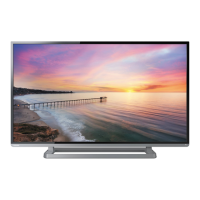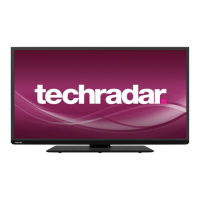
Do you have a question about the Toshiba 40LV933G and is the answer not in the manual?
| Comb filter | 3D |
|---|---|
| Smart modes | Game, PC, Standard |
| Response time | 10 ms |
| Display diagonal | 40 \ |
| Progressive scan | Yes |
| Display brightness | 400 cd/m² |
| Native aspect ratio | 16:9 |
| Native refresh rate | 50 Hz |
| Supported video modes | 1080i, 1080p, 480i, 480p, 576i, 576p, 720i, 720p |
| Contrast ratio (dynamic) | 40000:1 |
| Display diagonal (metric) | 102 cm |
| Screen format adjustments | 4:3, Auto, Zoom |
| Supported graphics resolutions | 1920 x 1080 (HD 1080) |
| Composite video out | - |
| RJ-12 ports quantity | 0 |
| Annual energy consumption | 127.02 kWh |
| Sound enhancement technology | Dolby Pulse |
| Video formats supported | H.264 |
| On Screen Display (OSD) languages | BUL, CZE, DAN, DEU, DUT, ENG, ESP, FIN, FRE, HUN, ITA, NOR, POL, POR, RUM, RUS, SLK, SLV, SWE, TUR |
| Product color | Black |
| Panel mounting interface | 400 x 200 mm |
| Tuner type | Analog & digital |
| Analog signal format system | NTSC, NTSC 4.43, PAL BG, PAL DK, PAL I, SECAM B/G, SECAM D/K, SECAM L |
| Digital signal format system | DVB-C, DVB-T |
| Audio system | NICAM Stereo |
| RMS rated power | 14 W |
| Number of speakers | 2 |
| USB 2.0 ports quantity | 1 |
| AC input voltage | 220 - 240 V |
| AC input frequency | 50 - 60 Hz |
| Power consumption (standby) | 0.3 W |
| Power consumption (typical) | 87 W |
| Package depth | 145 mm |
| Package width | 1060 mm |
| Package height | 700 mm |
| Number of OSD languages | 24 |
| Depth (with stand) | 248.2 mm |
|---|---|
| Height (with stand) | 641.1 mm |
| Depth (without stand) | 89 mm |
| Width (without stand) | 979.5 mm |
| Height (without stand) | 597.1 mm |
| Weight (without stand) | 5120 g |
Displays the current status of firmware updates.
Steps to navigate through the menu and input codes to access the factory settings.
Instructions for navigating within the factory menu to select the model type.
Steps and guidelines for updating firmware via USB.
Precautions for safely handling the LCD module during service.
Warnings and notes before servicing and ordering parts.
Definitions for component designators used in the parts list.
Instructions for accessing and using the service mode for adjustments.
Explanation of how panel information is encoded in serial numbers.
Displays the current status of firmware updates.
General safety precautions to be observed before and during servicing.
Information on safety-related characteristics of components and use of substitute parts.
Indicates that the troubleshooting section is not yet available.












